Navigation auf uzh.ch
Navigation auf uzh.ch
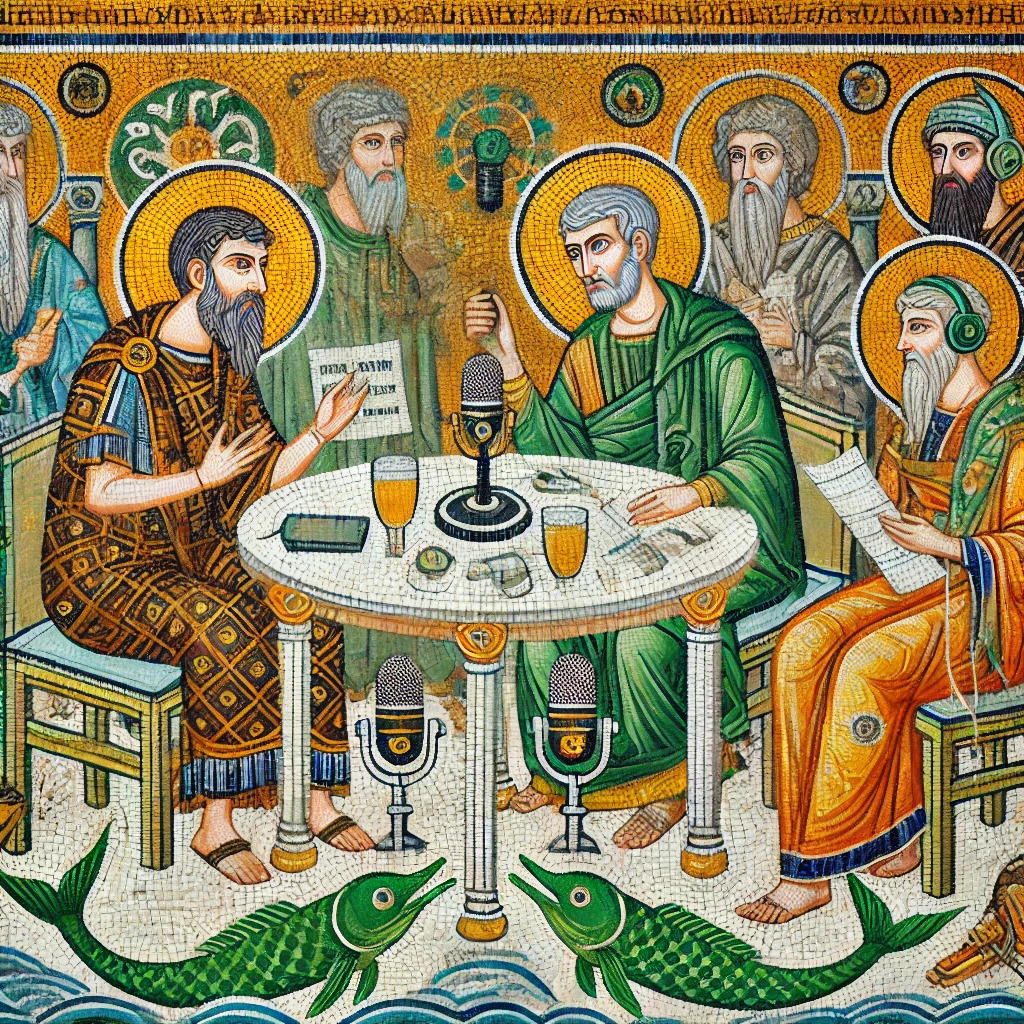
December 26, 2024
Get ready to immerse yourselves in the dazzling world of Byzantine art as we journey to Ravenna, Italy, to explore the magnificent mosaics of the Basilica of San Vitale. This church, constructed in the 6th century, is renowned for its captivating mosaics, considered by many to be among the most exceptional examples of Byzantine art. These mosaics are not mere decorations but visual narratives steeped in symbolism and historical significance, offering glimpses into the religious, political, and social landscape of 6th-century Ravenna.
Our exploration will begin with an overview of the mosaics' various themes, drawing heavily from Deborah Deliyannis's insightful book, "Ravenna in Late Antiquity" (2010). The mosaics, as Deliyannis points out, showcase an impressive range of imagery. We encounter scenes from the Old Testament, such as Abraham's hospitality and the sacrifice of Isaac, which, according to Deliyannis, are positioned to foreshadow the Eucharistic sacrifice celebrated in the church. We also meet significant figures from both the Old and New Testaments, with prophets and apostles flanking the apse, and Christ as the central figure. The mosaics do not shy away from depicting the imperial court either, with the famed representations of Emperor Justinian and Empress Theodora and their entourages. Lastly, we'll delve into the symbolic significance of the abstract ornamentations, like the intertwining green dolphins beneath medallions of Christ and the apostles, which Deliyannis associates with the concept of salvation.

The creation of these mosaics is a tale in itself. As Deliyannis explains, scholarly analysis has revealed that the mosaics were crafted by at least two different workshops, possibly indicating contributions from local Ravenna artists and those from Constantinople. This difference in style contributes to the overall complexity and richness of the artwork. We'll also discuss the numerous restorations that the mosaics have undergone throughout the centuries, drawing on insights from both Deliyannis and another source, "Ravenna - Mosaics, Monuments and Environment" (Bustacchini, 1984). This acknowledgement of restoration underscores the evolving nature of these artworks and highlights that what we witness today is not necessarily identical to their original appearance.
Focusing on specific scenes, we'll dissect the apse mosaic, featuring a youthful and beardless Christ enthroned on a celestial globe and presenting the martyr's crown to Saint Vitalis, the church's patron. The underside of the arch above is adorned with cornucopias paired with flowers and birds, alluding to abundance and paradise. Moving to the side walls of the presbytery, we encounter the celebrated depictions of Emperor Justinian and Empress Theodora with their entourages, images that have sparked considerable scholarly debate. While some scholars interpret these scenes as representations of offerings during the church's dedication, others view them as depictions of a liturgical ceremony, perhaps the First Entrance of the liturgy or the presentation of the bread and wine for the Eucharist.
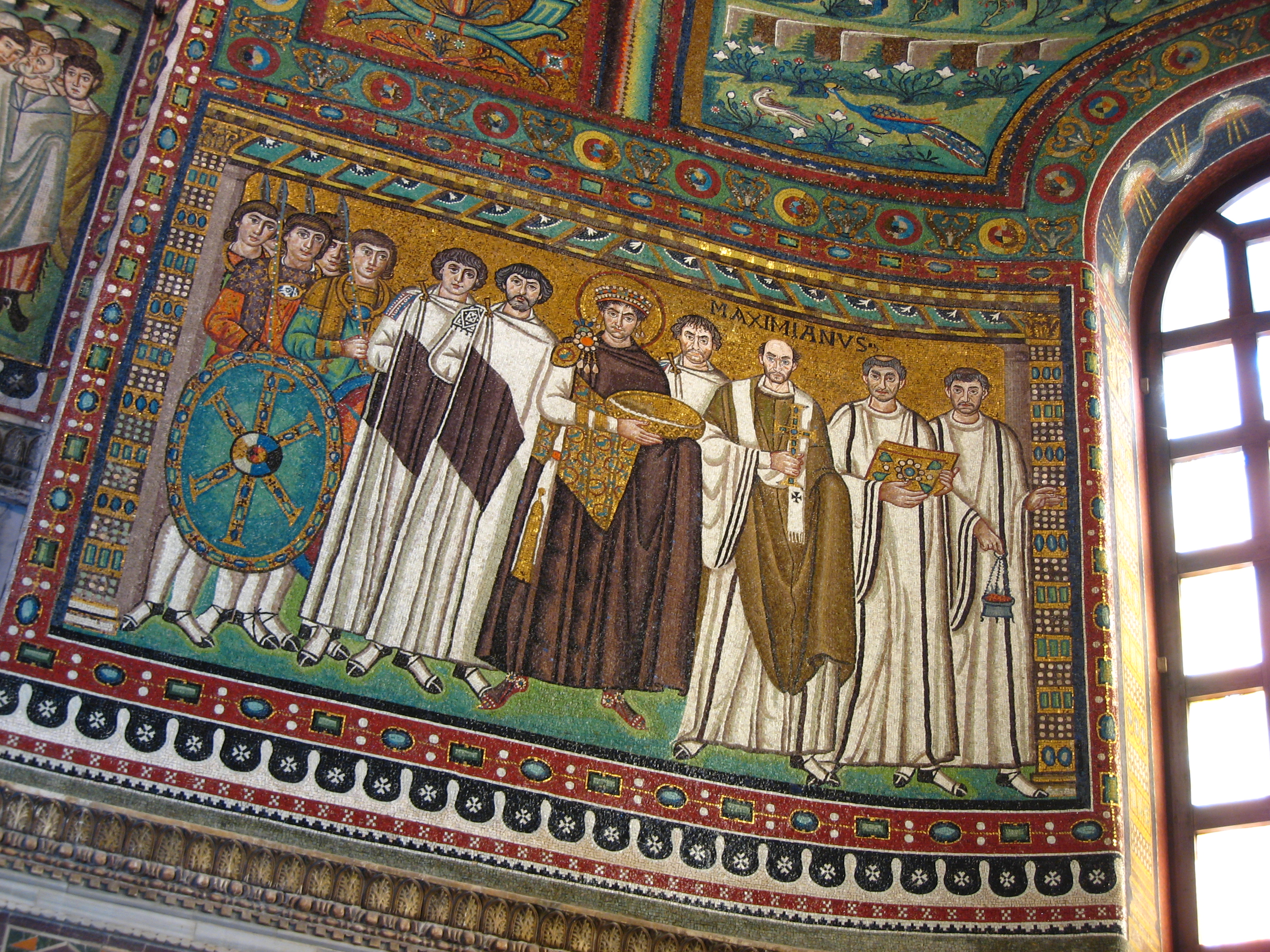
Join us as we peel back the layers of history, artistry, and symbolism embedded in the captivating mosaics of San Vitale. From the hands of the artists to the eyes of the beholder, from the 6th century to the present day, we'll traverse time and unravel the intricate narratives that make these mosaics an enduring testament to the power of Byzantine art.
Do you want to discuss further? Did you spot an error? Go to the discussion of this podcast episode! From there, you can also download the episode.

December 19, 2024
DISCLAIMER: We noted that our two artificial podcast hosts refer to Blumenthal as "he". We want to stress that they should have referred to the author as "she". However, this shows a known bias of these models. It might be that this also occurs in other episodes.
Our podcast delves into the multifaceted world of Christmas, exploring its rich tapestry of history, traditions, and cultural significance. We examine the holiday's origins, tracing its roots from ancient narratives to the diverse ways it's celebrated across the globe today. We consider the historical context of these narratives and how they've been interpreted over time, prompting reflection on their meaning and impact.
A key focus of our exploration is the evolution of Christmas customs, particularly the transformative influence of the Victorian era. We discuss how this period shaped many of the traditions we associate with Christmas today, from family gatherings and gift-giving to the rise of commercialisation and its impact on the holiday's spirit. We consider how Christmas shifted from a more public and sometimes boisterous celebration to a more intimate and family-centered occasion.
We also embrace the global diversity of Christmas, showcasing the myriad ways different cultures have adapted and integrated the holiday into their own unique contexts. From regional folklore and customs to distinctive culinary traditions and festive events, we highlight the remarkable adaptability of Christmas and its ability to resonate with diverse communities worldwide. This global perspective reveals Christmas as a dynamic and evolving phenomenon, constantly being reinterpreted and reimagined.

Ultimately, our podcast aims to provide a nuanced understanding of Christmas as a complex and evolving holiday. We address key themes such as the ongoing debates about its origins, the tension between tradition and commercialisation, and the ways in which Christmas has become a site of cultural contestation, reflecting broader societal shifts and values. We invite listeners to join us on a journey through time and across cultures to explore the enduring power and multifaceted nature of Christmas.
Do you want to discuss further? Did you spot an error? Go to the discussion of this podcast episode! From there, you can also download the episode.

December 12, 2024
The Corpus Juris Civilis. A name that echoes through the halls of legal history. Commissioned in the 6th century CE by Byzantine Emperor Justinian I, this monumental work stands as a cornerstone of Western legal tradition. It represents a comprehensive effort to codify and synthesise Roman law, a legal system that had evolved over centuries. The Corpus Juris Civilis is comprised of four distinct but interconnected parts:
In this episode, we will explore the historical context surrounding the creation of the Corpus Juris Civilis, examining the political and social factors that motivated Justinian's ambitious undertaking. We will delve into some contents of each of its four parts, analysing their structure, significance, and contribution to the development of legal thought. And we will trace the enduring legacy of the Corpus Juris Civilis, from its influence on Byzantine law to its rediscovery and reception in medieval Europe and its continuing relevance to modern legal systems. Join us as we unravel the story of this monumental work, a testament to the enduring power of law and the vision of an emperor who sought to shape the legal world for centuries to come.
Do you want to discuss further? Did you spot an error? Go to the discussion of this podcast episode! From there, you can also download the episode.
Harries, J. (2007) Law and Crime in the Roman World. Cambridge: Cambridge University Press (Key Themes in Ancient History).
Johnston, D. (ed.) (2015) The Cambridge Companion to Roman Law. Cambridge: Cambridge University Press (Cambridge Companions to the Ancient World).
Dingledy, F. W. (2016) ‘The Corpus Juris Civilis: A Guide to its History and Use’, Legal Reference Services Quarterly, 35(4), pp. 231–255. doi: 10.1080/0270319X.2016.1239484.
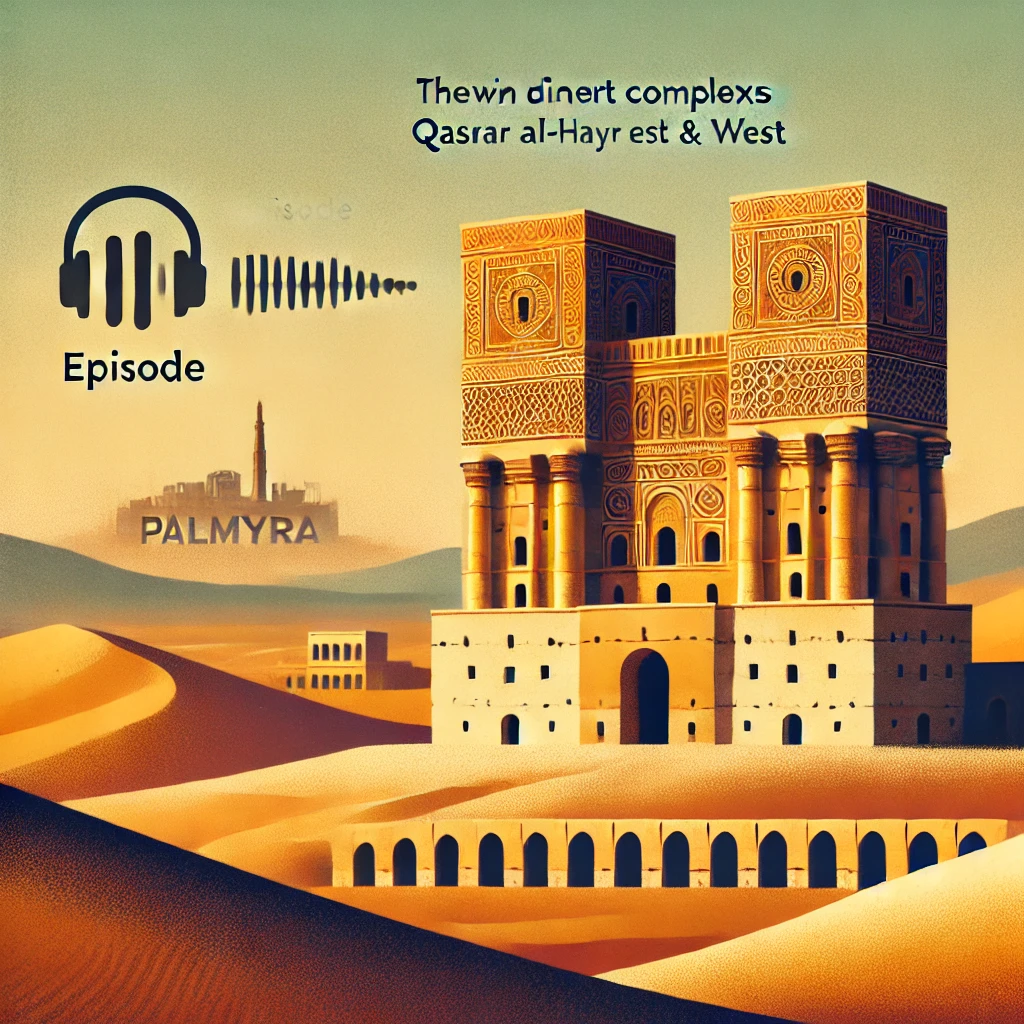
December 4, 2024
The twin desert complexes of Qasr al-Hayr East and West, located on either side of Palmyra in Syria, have puzzled historians and archaeologists for decades. Their unique architecture, a blend of Roman and Islamic influences, has sparked debate over their purpose. Were they palaces? Military outposts? Caravanserais? Or simply castles, as their Arabic name suggests?
While both structures share a similar rectangular layout, their individual histories and fates diverged. Qasr al-Hayr West, situated on the ancient road to Damascus, was built around a pre-existing Ghassanid monastery tower dating back to 559 AD. The tower's unusual machicolation-bretèche, a projection with an opening for defense, hints at the site's strategic importance. The enclosure walls were added later, in 727 AD, but today only their foundations remain.
To further explore the mysteries of Qasr al-Hayr, it's crucial to examine the broader context of Islamic military architecture in the region. During the Umayyad period, the concept of the "qaṣr", an elite residence often associated with military functions, emerged in the Arabian Peninsula. This architectural form spread throughout the newly conquered territories, adapting to local conditions and needs. Qasr al-Hayr, with its blend of Roman and Islamic features, exemplifies this evolution.
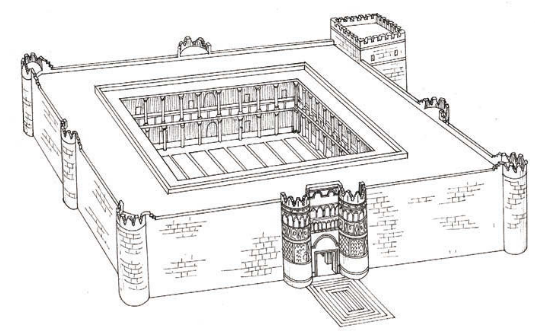
The construction of Qasr al-Hayr must also be considered within the framework of the early Islamic urban landscape. The Abbasid Caliphate, which rose to power in the mid-8th century, witnessed a flourishing of urban centers. While cities like Damascus and Aleppo represent the bustling heart of this urban civilization, sites like Qasr al-Hayr offer a glimpse into the peripheries, where the influence of the Caliphate extended into the desert.
Do you want to discuss further? Did you spot an error? Go to the discussion of this podcast episode! From there, you can also download the episode.
Holod-Tretiak, R. 1970. Qasr al-Hayr al-Sharqi: A Mediaeval Town in Syria. In: Archaeology, 23(3), 221–231. http://www.jstor.org/stable/41674152
Kennedy, H. (Eds.). 2006. Muslim Military Architecture in Greater Syria. Leiden, The Netherlands: Brill. https://doi.org/10.1163/9789047417460
Nossov, K. 2013. Qasr al-Hayr: Mysterious heritage amidst the Syrian Desert. In: Medieval Warfare, 3(6), 43–47. https://www.jstor.org/stable/48578298
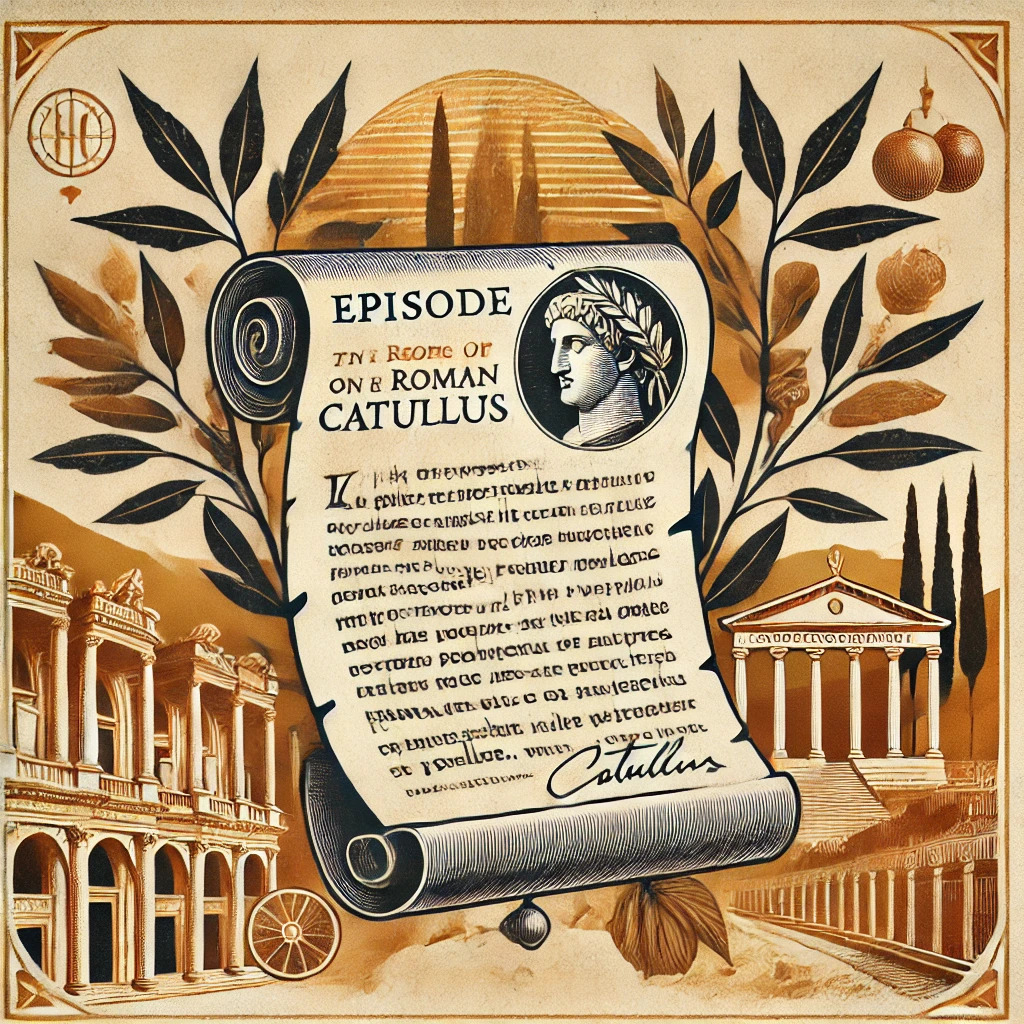
November 28, 2024
Dive into the fascinating world of Catullus's invectives with our latest podcast! We explore how these cutting insults functioned as social tools in Roman society, shaping public discourse and upholding societal norms. Discover how Catullus drew inspiration from Greek iambic poetry, particularly the works of Archilochus, to craft his own aggressive and personal attacks.
But there's more to Catullus than meets the eye. We unravel the complexities of his voice, examining how he condemns behaviours he himself engages in and shifts between moral authority and comic ineptitude. We also delve into the role of obscenity in his invectives, exploring how it constructs and challenges Roman masculinity.
Finally, we analyse the poetic brilliance of Catullus's invectives, from his masterful use of meter to his metapoetic statements that blur the lines between personal attack and artistic expression. Join us for a nuanced look at the literary, social, and political significance of Catullus's invectives!
Do you want to discuss further? Did you spot an error? Go to the discussion of this podcast episode! From there, you can also download the episode.
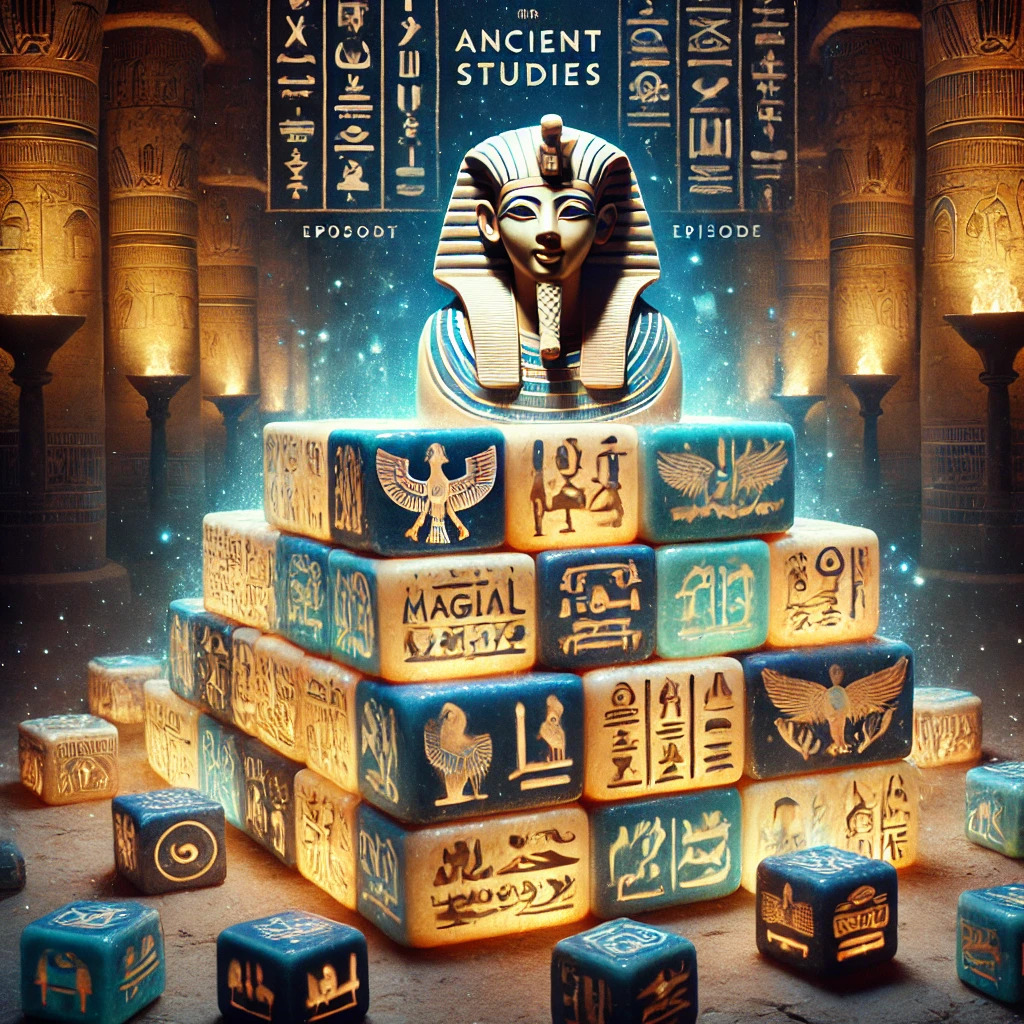
November 21, 2024
The magical bricks, as described in the sources, were not simply construction materials repurposed for a funerary context. They were meticulously crafted objects imbued with symbolic meaning and ritual significance. Made from finely sieved, dark-coloured clay, they were typically left unbaked, as instructed in the Book of the Dead (BD), 151. This attention to detail extended to the inclusion of specific substances, such as incense, which was mixed with the clay, as evidenced by the brick of Nespamedu.
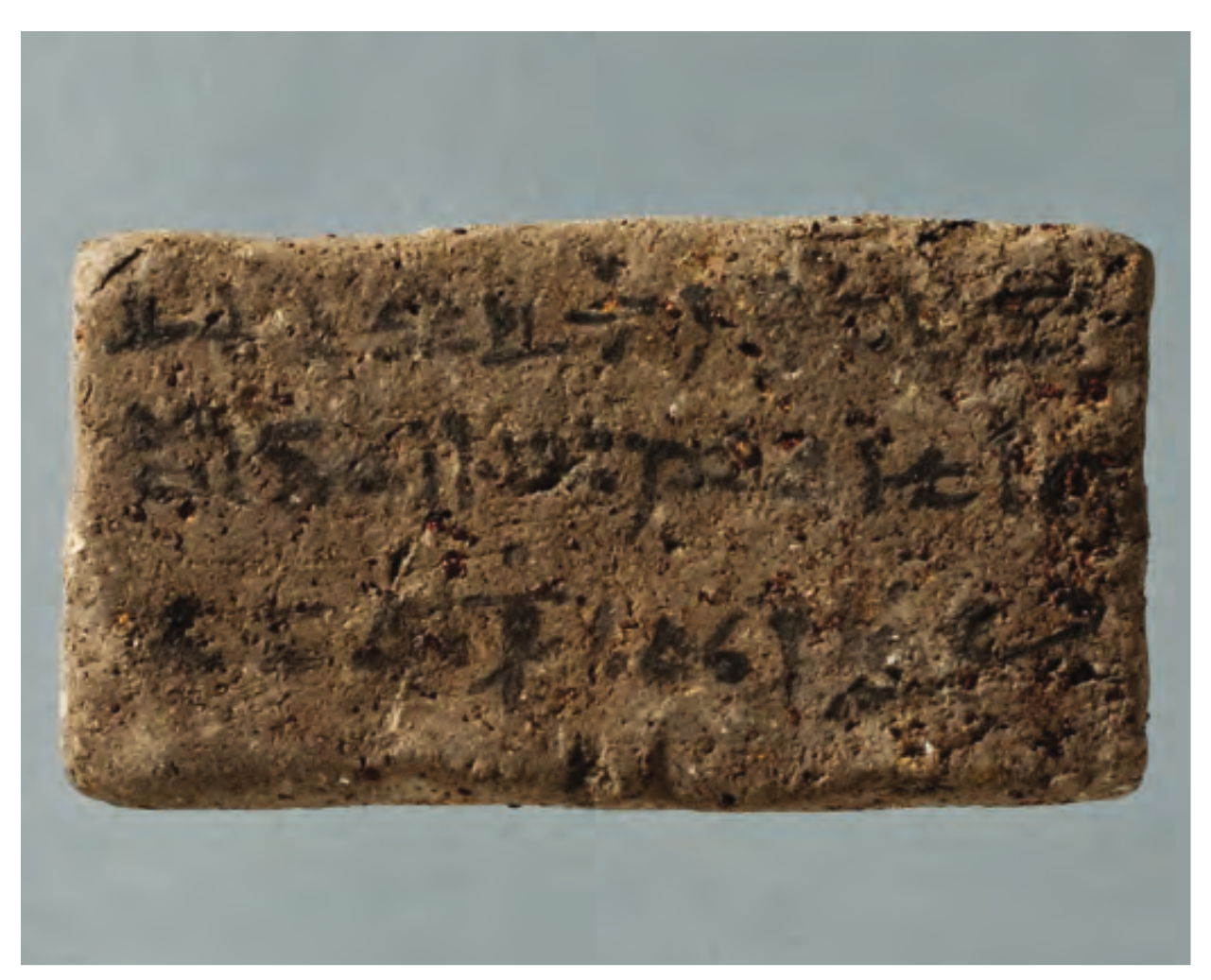
The production of these magical bricks involved specific rituals and incantations, and their placement within the tomb was carefully orchestrated. However, the sources reveal a fascinating tension between the idealised instructions laid out in BD 151 and the actual archaeological findings. These inconsistencies manifest in the materials used, the method of inscription, the number and arrangement of the bricks, and their orientation within the tomb.
BD 151, a spell from the Book of the Dead, meticulously outlines the procedures for creating and placing these magical bricks. It prescribes the use of four unbaked clay bricks, each inscribed with a specific spell and paired with a particular amulet. These amulets, representing Anubis, a mummiform figure, a flame, and a djed-pillar, were to be fixed to the bricks and oriented towards the four cardinal points. This ritual, documented in papyri dating from the early Eighteenth Dynasty to the Ptolemaic Period, aimed to protect the deceased and ensure their successful transition into the afterlife.

The sources, however, highlight numerous instances where the archaeological evidence diverges from the instructions of BD 151. Baked bricks have been found in place of unbaked ones. Some bricks lack the prescribed inscriptions, while others display inscriptions added after drying. The number of bricks used also varies, with Tutankhamun's tomb containing five bricks instead of four. Their arrangement and orientation within the tomb also frequently deviate from the cardinal alignments dictated by the spell.
The sources offer several possible explanations for these discrepancies. Some suggest that practical considerations, such as the layout of the burial chamber or the position of the sarcophagus, may have taken precedence over strict adherence to the spell's instructions. Others propose that the use of a ritual orientation within the tomb, potentially distinct from the true geographical directions, might account for the variations in orientation.
The discrepancies might also reflect evolving theological interpretations or alternative ritual traditions. The sources posit that over time, the understanding and application of BD 151 may have undergone modifications, leading to variations in practice. It's also conceivable that local customs or individual preferences influenced the production and placement of the bricks. Some scholars even suggest that the mere presence of the bricks, rather than strict adherence to the precise details of BD 151, might have been considered sufficient for fulfilling their protective function.
Listen in to this week's podcast episode, highlighting this and many other peculiarities about magical bricks:
Do you want to discuss further? Did you spot an error? Go to the discussion of this podcast episode! From there, you can also download the episode.
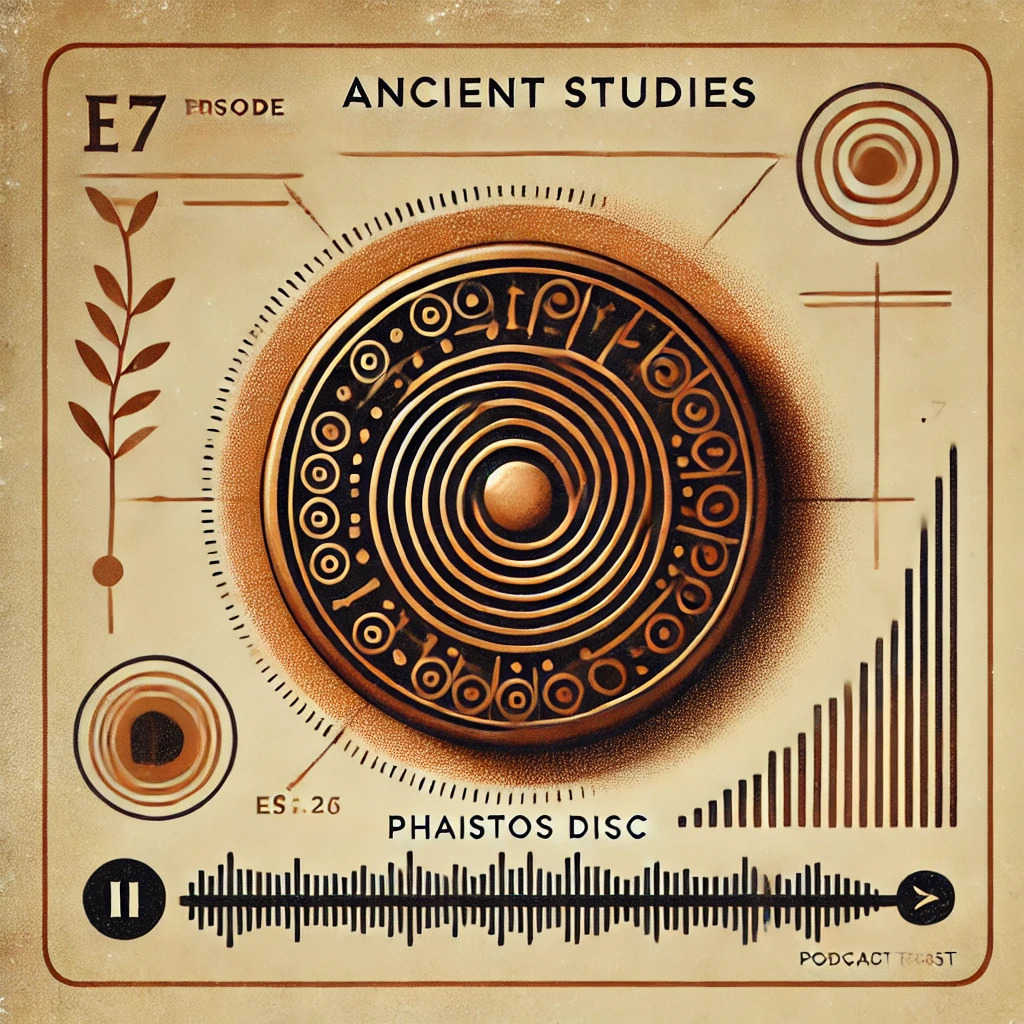
November 14, 2024
The Phaistos Disc is one of the most intriguing mysteries of archaeology. Discovered in 1908 on the island of Crete, this enigmatic artefact, dating back to the Minoan civilization, has captivated scholars for over a century. The disc's most striking feature is its unique script, composed of 45 distinct symbols meticulously stamped into its clay surface. Despite numerous attempts, the Phaistos Disc’s script remains undeciphered, leaving its message shrouded in mystery.
What secrets does this ancient artifact hold? Is it a royal decree, a religious hymn, or something else entirely? Join us as our AI-generated podcast explores the ongoing efforts to crack the code of the Phaistos Disc, examining the challenges and methodologies involved in deciphering ancient scripts. We'll look into the disc's potential language and cultural context, drawing upon theories and interpretations put forth by researchers like Ohlenroth (1996), who suggests a connection to the Lycian cult of Zeus.
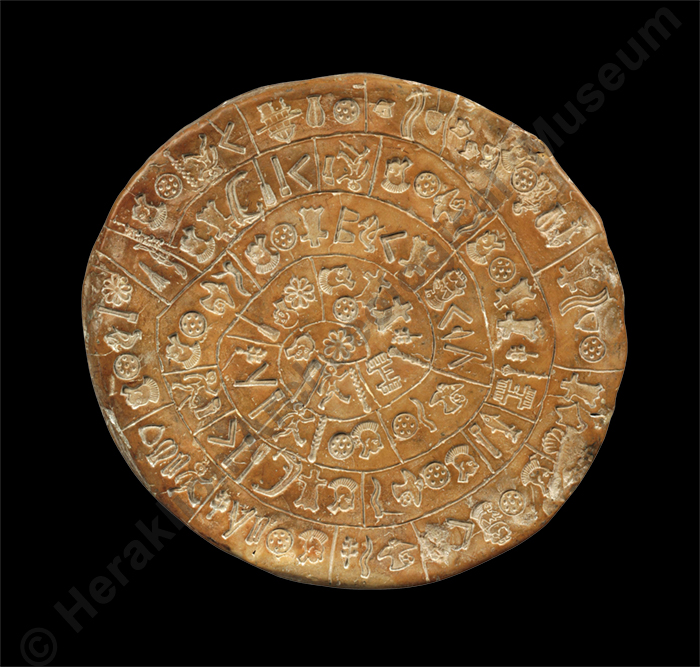
Prepare to be transported back in time as we discuss:
Get ready for a fascinating journey into the world of ancient writing, linguistic puzzles, and the enduring quest to unlock the secrets of the Phaistos Disc.
Do you want to discuss further? Did you spot an error? Go to the discussion of this podcast episode! From there, you can also download the episode.

November 7, 2024
This is our very first episode focusing on a Greek object. Today, our artificial podcast hosts are going to be talking about a particular vase, the Sarpedon Krater. It's a fascinating and beautiful piece of ancient art that has a lot to tell us about Greek culture, mythology and artistic techniques.
The Sarpedon Krater is not just an object; it's a window into the past. We'll follow its journey through time, from its creation in Athens to its controversial acquisition by the Metropolitan Museum of Art and its eventual return to Italy. We'll discuss the ethical questions surrounding the acquisition of antiquities and explore the complex relationship between the art market and archaeology.
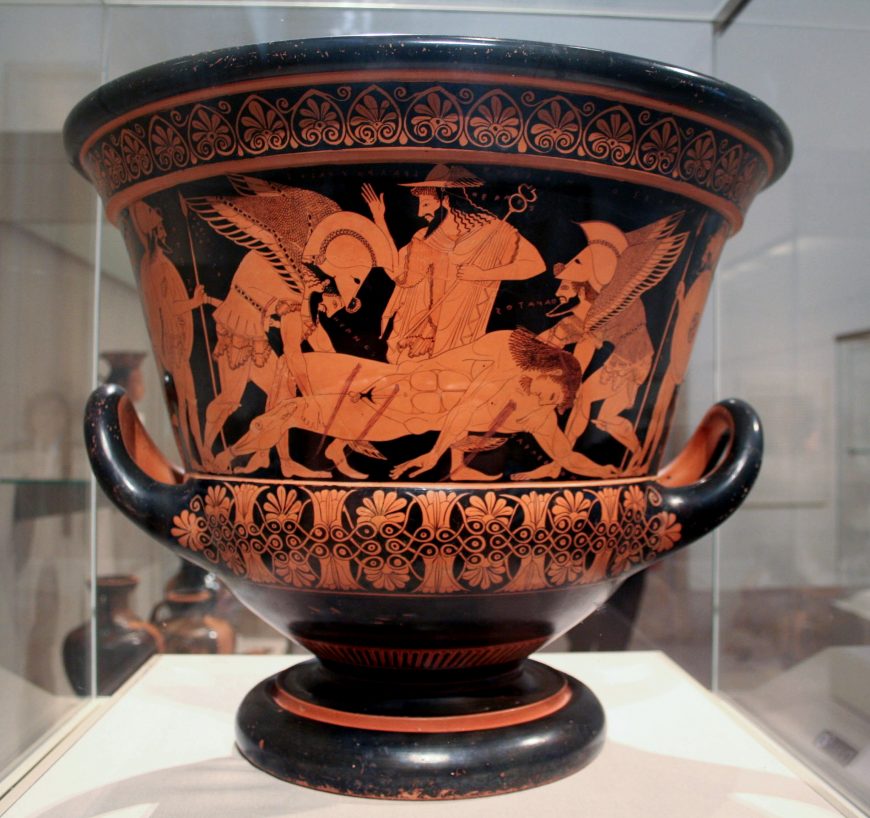
The story depicted on the Krater is a poignant one: the death of the Lycian hero Sarpedon in the Trojan War and the intervention of the gods Sleep and Death to carry his body from the battlefield. We'll examine the different interpretations of this scene, considering both its meaning for the Athenians who made the vase and its significance for the Etruscans who owned it.
Along the way, we'll learn about the artist Euphronios, a pioneer of the red-figure technique, and his circle of talented colleagues. We'll also consider the social context of the symposium, the drinking party that was a central part of ancient Greek life, and the role that vases like the Sarpedon Krater played in these gatherings. This episode will offer a unique blend of art history, archaeology and mythology, bringing the ancient world to life through the story of this extraordinary object.
Do you want to discuss further? Did you spot an error? Go to the discussion of this podcast episode! From there, you can also download the episode.
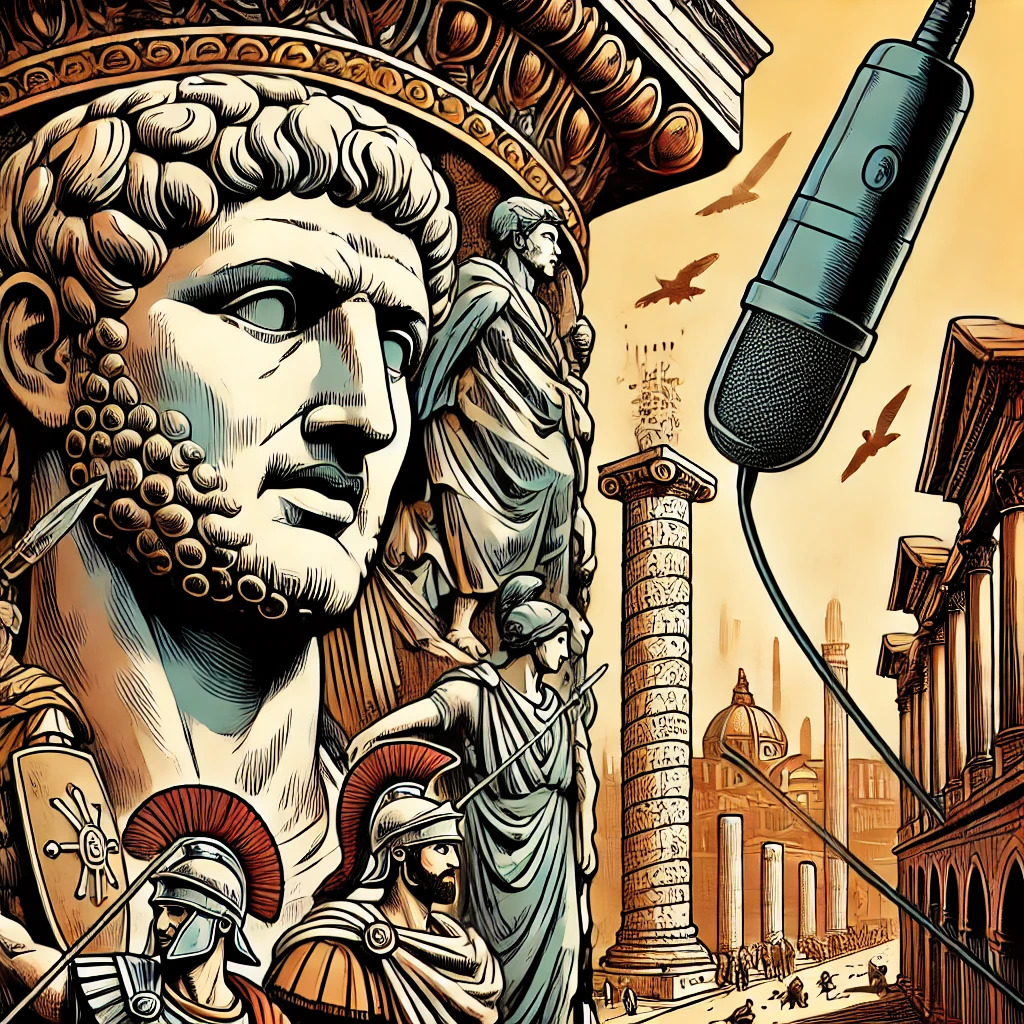
October 31, 2024
The Column of Trajan in Rome is a fascinating monument that offers us a unique insight into Roman history, art, and architecture. In this podcast episode, we embark on a journey to uncover the secrets of this impressive structure and discover the stories hidden within its intricate reliefs.
As inputs for NotebookLM, we took the images of the column from below, as well as a text by Dio and a coin. Interestingly, the coin does not feature in the discussion at all.
The Column of Trajan is a monument of exceptional significance that continues to captivate us to this day. In this podcast episode, we will attempt to shed light on the many layers of this monument and bring its history to life. Keep in mind that this podcast is automatically generated and thus may contain errors!
Do you want to discuss further? Did you spot an error? Go to the discussion of this podcast episode! From there, you can also download the episode.

October 24, 2024
In this inaugural episode, we dive into a fascinating journey that began with a simple coin from the reign of Augustus. The podcast explores the story behind a Roman coin from the kenom platform, displaying both the obverse and reverse sides in detail:

Using AI tools, the images of the coin were fed into NotebookLM, which remarkably extracted much of the available information solely from the images—without any accompanying descriptions. Even the dating of the coin is accurate, though no specific dates are mentioned in the episode. Interestingly, the inscription on the obverse side doesn't correspond to the visible text on the coin and seems to have been creatively interpreted by the AI.
The episode takes an unexpected turn when a segment from Josephus’ Antiquities (18,65-80) about the destruction of the Temple of Isis is mistakenly uploaded into the same notebook. Despite the error, the AI integrated this side story seamlessly into the narrative, offering a layered discussion on ancient Roman history. This serendipitous detour not only enriches the exploration of Augustus' coin but also adds depth to the podcast by linking two seemingly unrelated historical events.
Tune in to uncover how AI and ancient history collide in this unique look at Roman artefacts and historical storytelling.
Do you want to discuss further? Did you spot an error? Go to the discussion of this podcast episode! From there, you can also download the episode.